
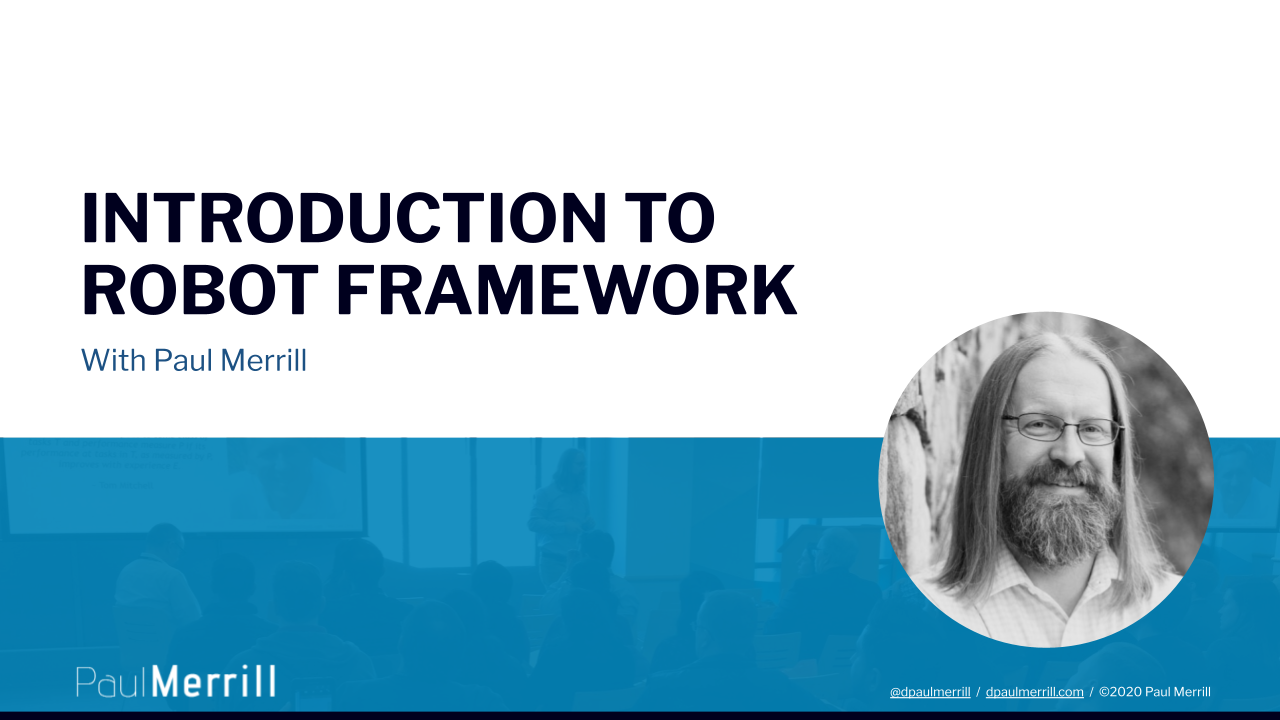
Welcome to Introduction to Robot Framework. I'm your instructor, Paul Merrill.
Robot Framework is a test driver.
It allows folks with little to no programming experience, to create test automation. It is keyword-based. It's written in Python.
It's highly extensible and it's also free.
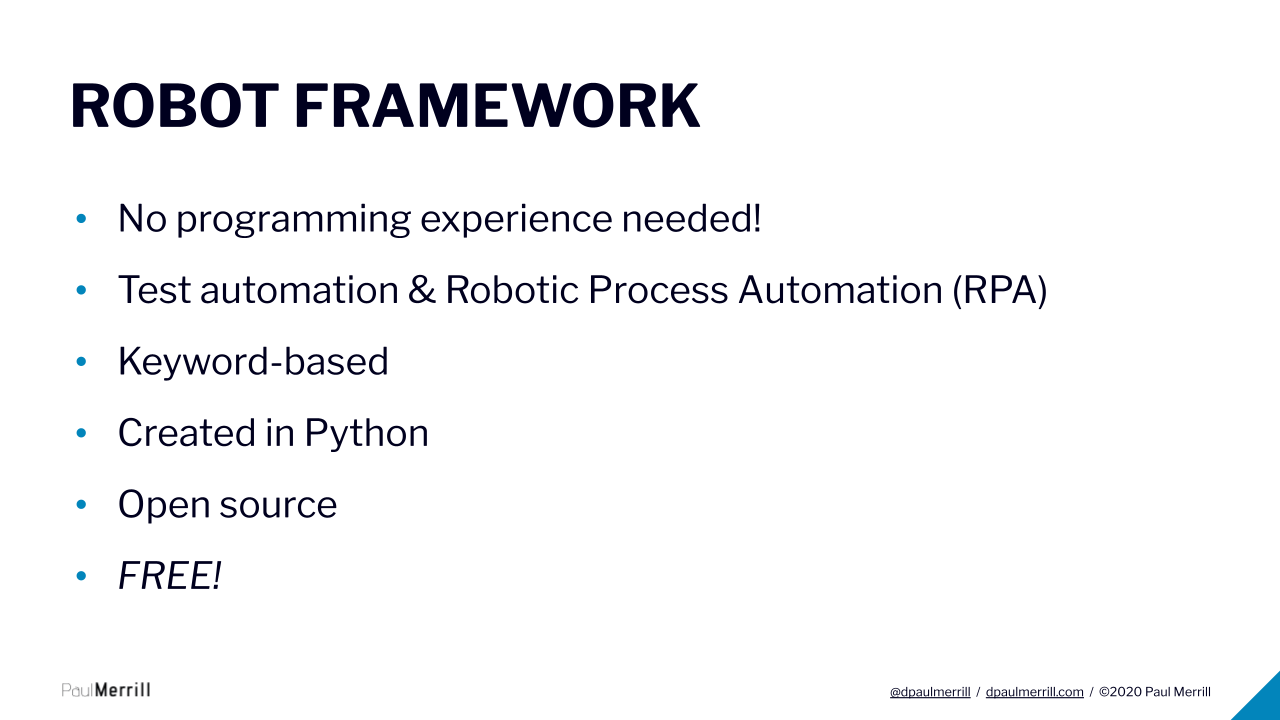
Robot Framework keywords can be implemented in Robot Framework, in Python, Java, .Net, Perl, JavaScript and PHP.
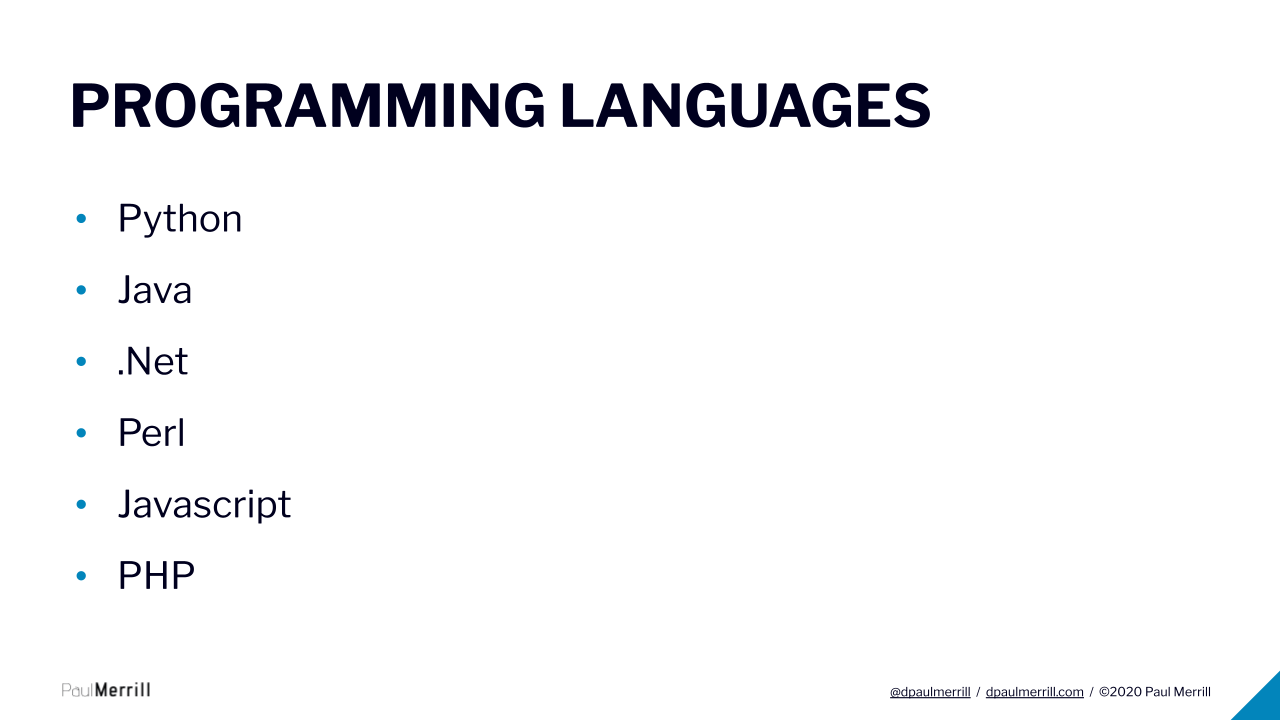
Robot Framework supports acceptance test-driven development, keyword-driven testing, data-driven testing, and test-driven development, along with behavior-driven development.
# Prerequisites
While programming skills are not necessary for learning Robot Framework, those who have them, will move faster.
I recommend knowing the basics of how to navigate the file structure and run programs through the command line.
It'll also be good to know how to open, edit, and save text files.
# Course Overview
In this course, we'll learn what Robot Framework scripts look like, how to create Robot Framework scripts, how to install Robot Framework and the other tools we'll need.
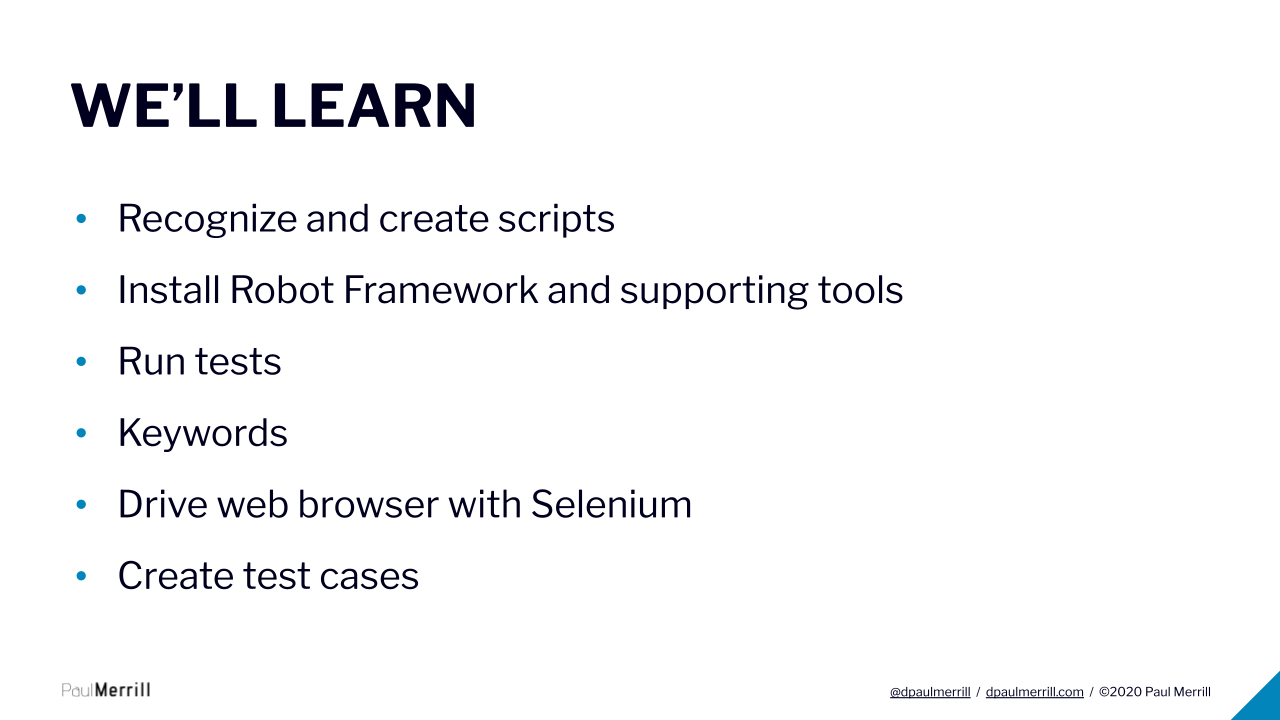
We'll also learn how to run our tests, how to create a keyword, how to use a keyword to do an action, the correct syntax for keywords, how to find keywords, read their documentation, and how to drive a web browser using Selenium library for Robot Framework.
We'll also learn how to create test cases in your test script.
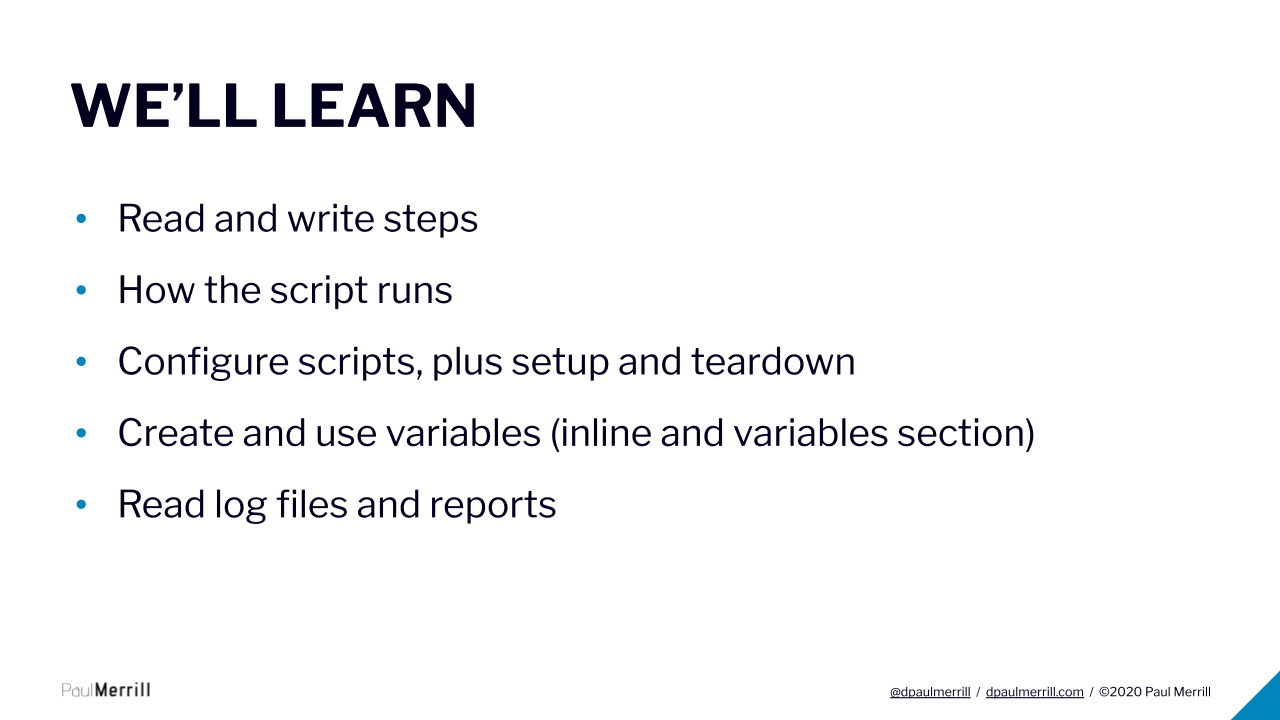
Then, we'll cover how to read and write tests in your script, how Robot Framework runs your test script, how to configure your test script, including creating setup and tear down steps.
We will also learn to create and use variables. We'll learn how to use variables in line and within sections in your script.
Finally, we'll learn how to read the log and report files Robot Framework generates.
This may seem like a lot to absorb in just a little over an hour, but we'll go through it together. I'm looking forward to working with you as you learn Robot Framework. Now, let's get started.
